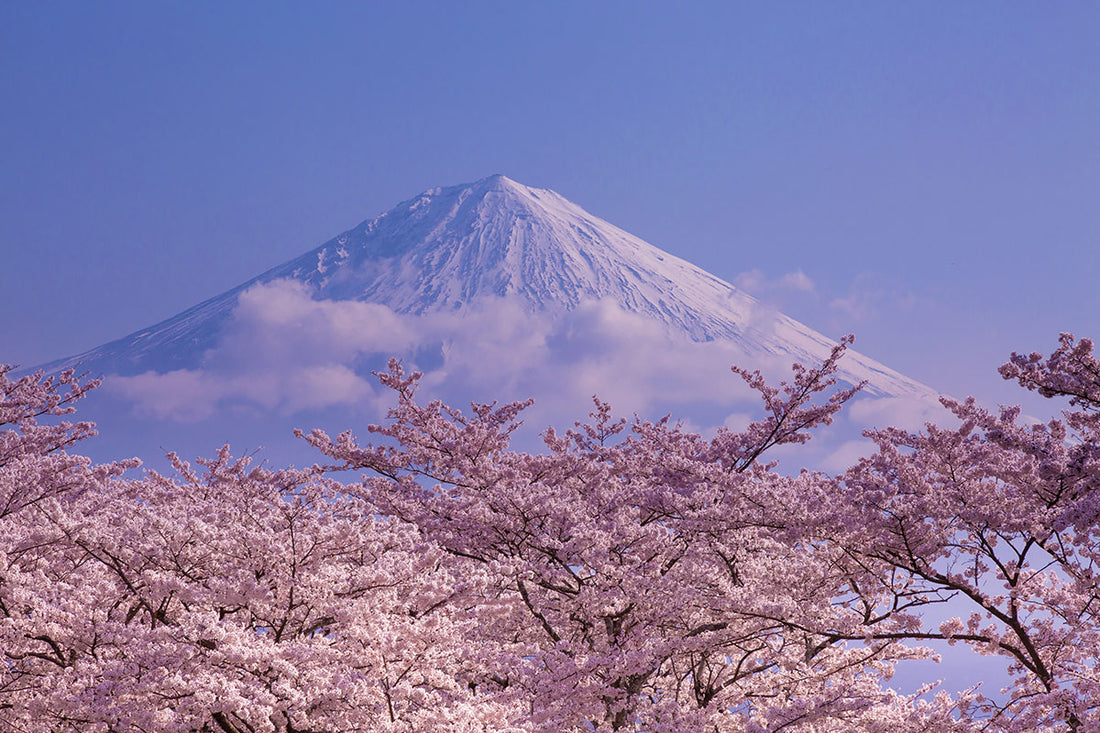Symbol of beauty and one of the most recognizable emblems of Japan, Sakura flowers are the quintessential Japanese statement ! No doubt you have already heard of, or even seen those alluring flowers and their characteristic pink tone during the blooming season, but would you call yourself an expert on the subject ? Worry no more, 供TOMO gathered for you a few interesting facts to impress your friends during your next Hanami.
Sakura what?

Before being a popular first name in Japan, the term Sakura describes the flower of many trees, members of the Prunus family (regrouping varied fruits, notably Plums and Cherries, but also Apricots, Almonds…). Interestingly, the flower is classified as a Rosaceae, the group of common Roses. With more than 600 types of Cherry blossom, the terminology can be confusing, but Sakura usually refers to the ornamental, non-edible cherry tree (and should not be confused for Plum Blossom).
The etymology of "sakura":
Very few people know that the name Sakura comes from Konohanasakuya-hime, the Goddess of volcanoes and blossoms, her own symbol being the Sakura.

The mythology surrounding this goddess is rich and fascinating, and if you wish to learn more about her, we recommend visiting the shrines erected to her in Kawaguchi. Called Asama Shrine, it was built to worship volcanoes deities.

If you ever have the chance to go to Mount Fuji, make sure to stop at Fuji Omuro Sengen, the oldest Shrine there, built in 699. Naturally, this ancestral place is surrounded by wonderful Sakura for you to enjoy. Before heading there, check our article on how to pray when in a shrine !
600 shades of Pink :
The designation "cherry trees" describes more than 600 different varieties of trees. The label is used to categorize trees that come with different shapes of petals, blooming period or even color, ranging from white to pink mainly.
To make it easier, here are the 6 main type of Sakuras you need to remember:
-The Kanzakura (寒桜): endemic to east-asian countries, this variety is recognizable by the deep pink of its flowers. It typically blooms from the end of February.
-The Edo-higan (江戸彼岸): blooming in late March (the Higan period) to mid-April, this variety has a rather pale tone, and the trees grow particularly slowly. Thanks to that, the typical lifespan of these trees is exceptional, the oldest Sakura tree ever being the Jindai-zakura, estimated to be up to 2000 years old.
-The Shidarezakura (枝垂桜): related to Edo-higan, this tree varies by its drooping branches - therefore its common name of Weeping Cherry.
-The Yamazakura (山桜): with a pink flower and reddish leaves, this type of sakura usually bloom in the beginning of April
-The Someiyoshino (染井吉野): the most typical Japanese sakura in Japan. The pink and white flowers blossom before the leaves.
-The Oshimazakura (大島桜): typical from the Izu Ōshima island and the Izu Peninsula, this white sakura leaves are salted and then used to wrap sakura-mochi (Japanese pastries made with glutinous rice which taste great with Café Genshin).
The history of hanami
Originally, hanami was an event to pray for a good harvest in spring. The Japanese used to have a banquet with sake and a feast while looking at the flowers with the mountain deities. During the Heian period (794-1185), it was organized as a leisure event for aristocrats. After the Kamakura period (1185-1333), this practice became popular among samurai families. In 1598, Toyotomi Hideyoshi held a grand event called "Hanami in Daigo" with 1,300 people at the foot of the mountain behind Sanbo Temple in Daigoji Temple, in Kyoto.

Sanbo-in Garden in Kyoto
During the Edo period (1603-1868), Iemitsu Tokugawa, the third shogun of Japan, had cherry trees transplanted from Yoshino-yama (Nara) to Ueno (Tokyo).

Ueno park in Tokyo
Ueno became a famous place for cherry blossom viewing. The cherry blossoms spread all over the country, and hanami became an increasingly popular event in Japan.

Conclusion
Although times have changed, the Japanese love for cherry blossoms has not. Covid has made it difficult to organize hanami, but we can still enjoy the charm of cherry blossoms and falling cherry trees by taking a leisurely walk along the cherry blossoms or admiring cherry bonsai trees at home.

